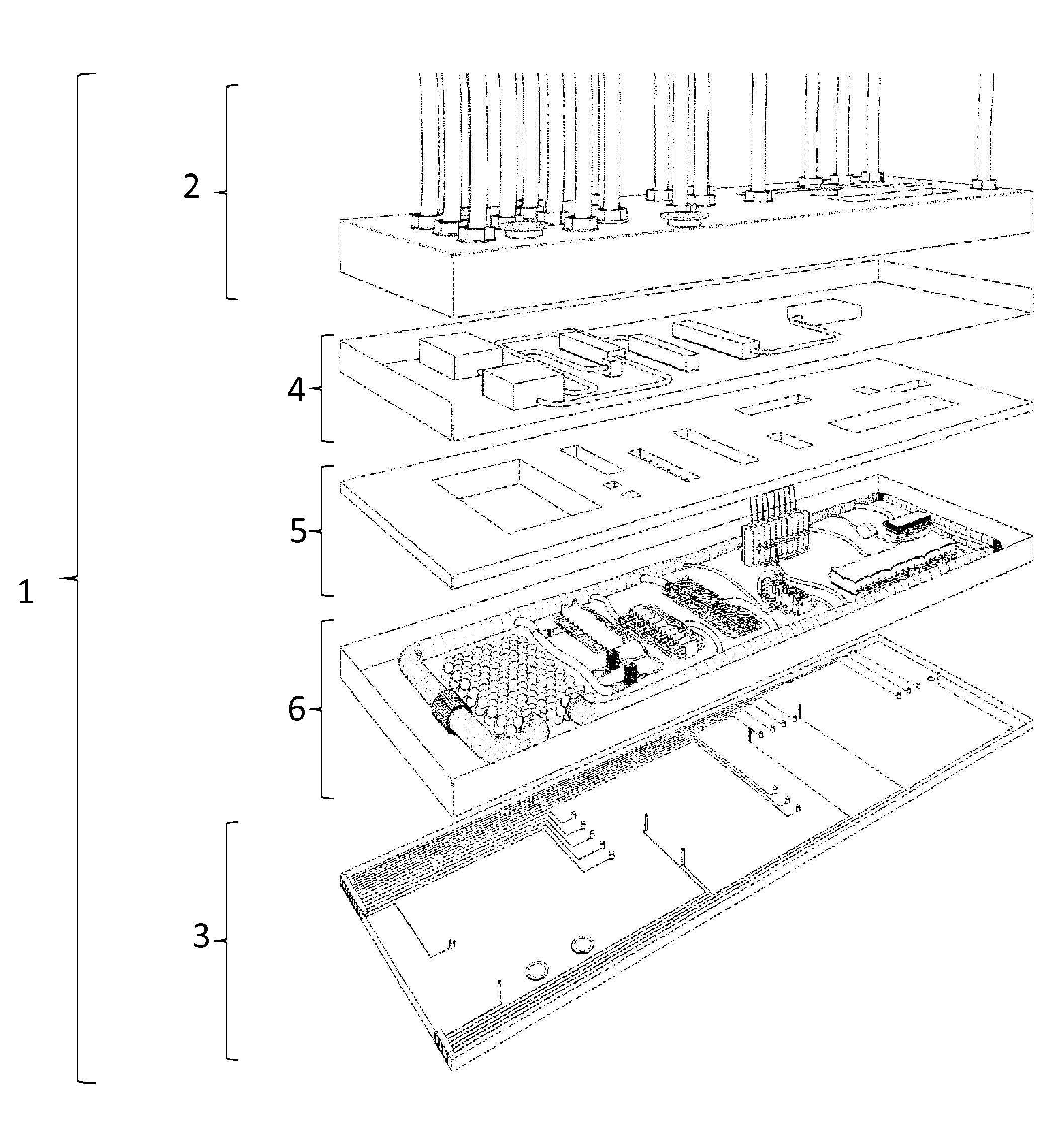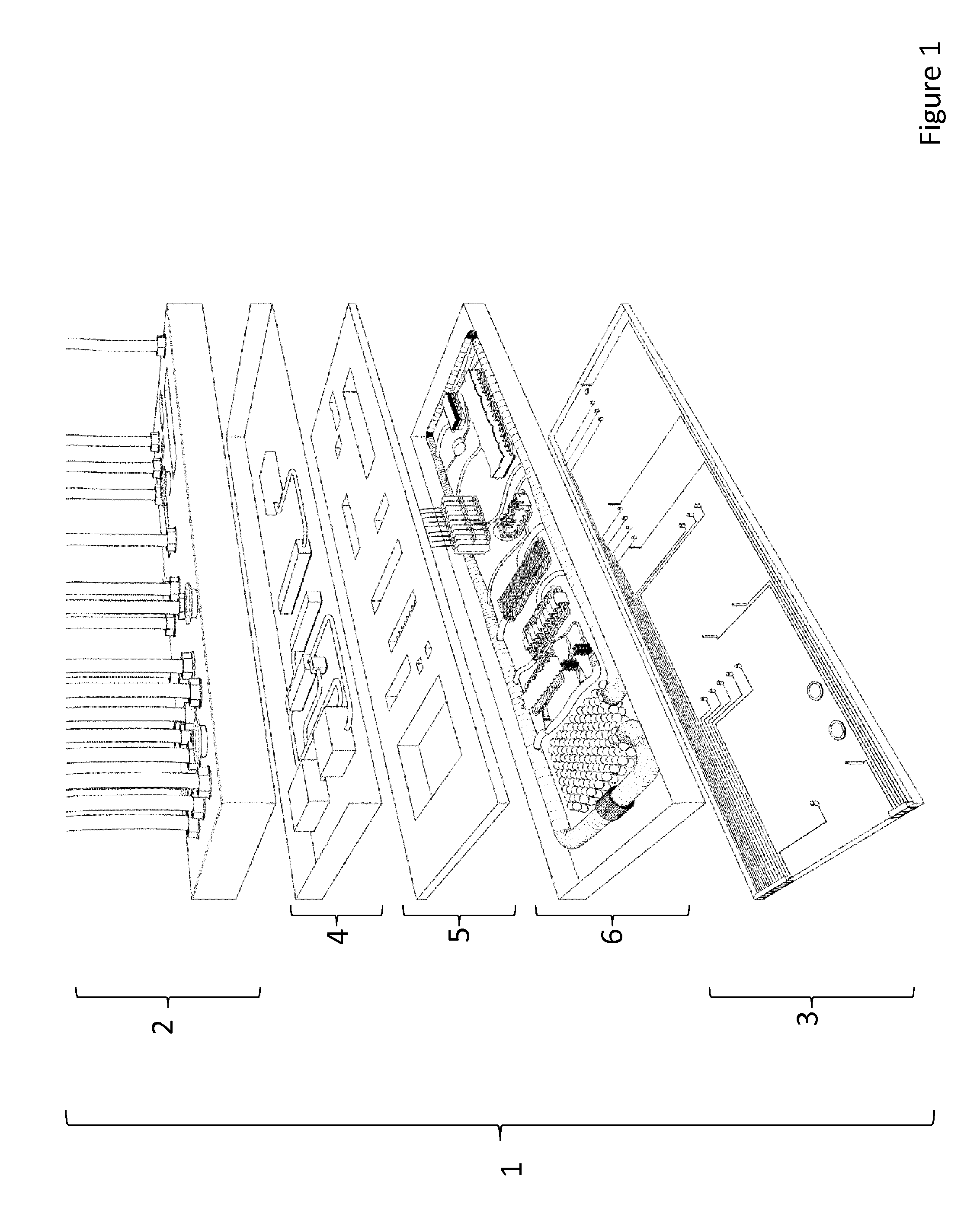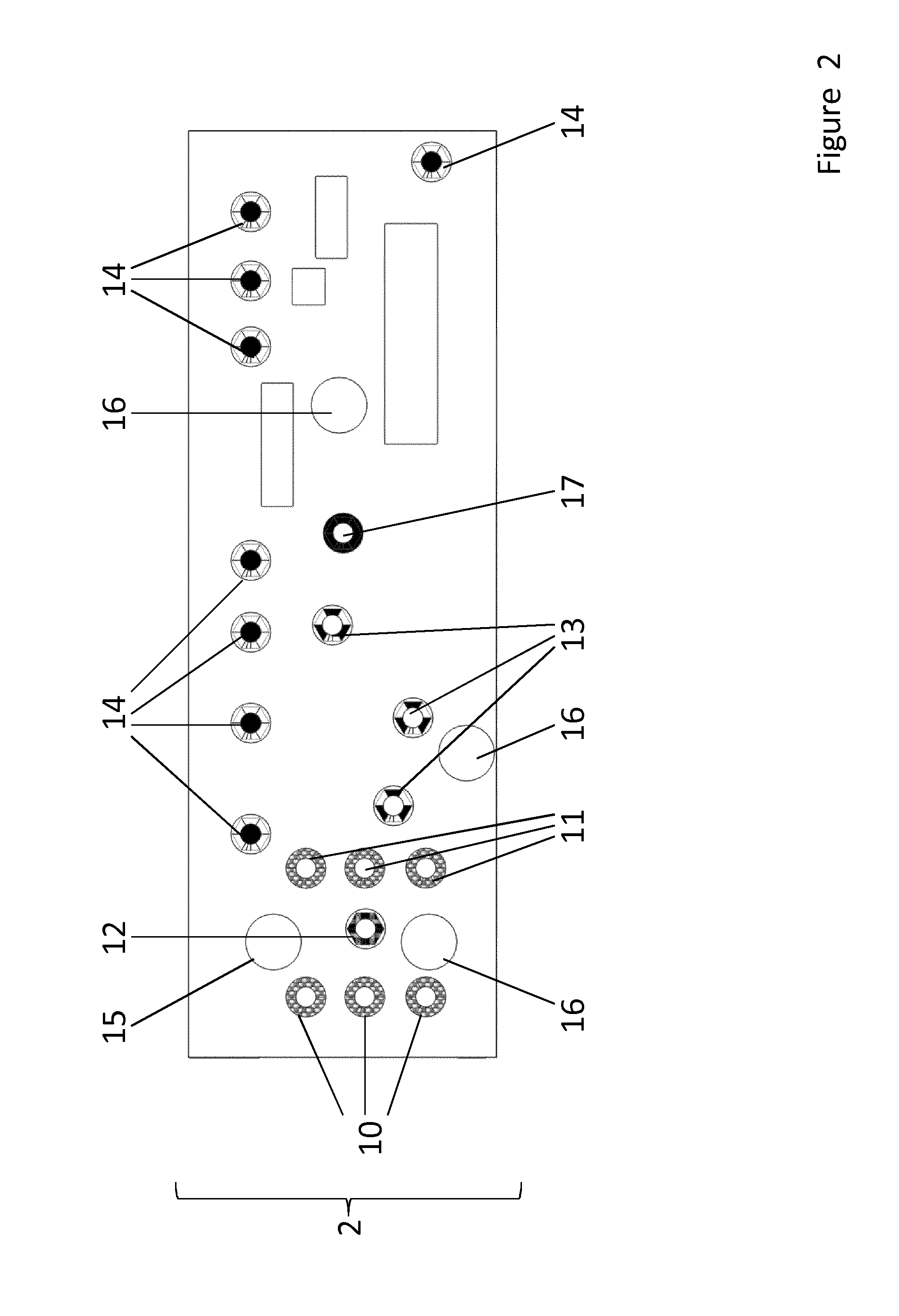Multi-organ chip with improved life time and homoeostasis
- Summary
- Abstract
- Description
- Claims
- Application Information
AI Technical Summary
Benefits of technology
Problems solved by technology
Method used
Image
Examples
example
Example 1
Multi-Organ-Chip Device of the Invention
[0106]As depicted in FIG. 1, the multi-organ-chip device 1 comprises a base layer 3, an organ layer 6, an organ holder layer 5, an antra layer 4 and an actuator layer 2.
[0107]As shown in FIG. 6, the base layer 3 is configured to provide a solid support for the further layers. The base layer 3 is made of glass or a transparent synthetic polymer like e.g. polystyrol (PS), polycarbonate (PC), polysiloxane and / or polydimethylsiloxane (PDMS). The base layer 3 also comprises a number of sensors 32 and 33 which are designed and arranged to monitor and control the system. Some of these sensors 32 are configured to apply electric stimuli to organ equivalents of the organ layer, other sensors 33 are configured to measure parameters of the system in order to ensure proper function. The base layer 3 comprises ports from which data acquired by the sensors can be extracted and used for other purposes like e.g. regulating the system.
[0108]The organ ...
example 2
Integrating Biological Vasculature into a Multi-Organ-Chip Device of the Invention
[0149]We aimed to emulate the transport part of the human vasculature—heart and vessels—on a chip in order to demonstrate feasibility of establishment of a functional vasculature equivalent on a multi-organ-chip or human-on-a-chip device of the invention. An on-chip micropump to support steady long-term fluid flow through a microchannel system fully covered by primary human dermal microvascular endothelial cells (HDMECs) was established. In contrast to the majority of the existing microsystems to investigate shear stress effects on ECs applying steady shear stress in the range of 10-40 dyn / cm2, we aimed for pulsatile shear stress with reversing patterns which had been used earlier in different experimental settings. The microvascular transport system presented in this work interconnects two separate compartments which are designed for the integration of individual organ equivalents with a biomass capac...
PUM
 Login to View More
Login to View More Abstract
Description
Claims
Application Information
 Login to View More
Login to View More - R&D
- Intellectual Property
- Life Sciences
- Materials
- Tech Scout
- Unparalleled Data Quality
- Higher Quality Content
- 60% Fewer Hallucinations
Browse by: Latest US Patents, China's latest patents, Technical Efficacy Thesaurus, Application Domain, Technology Topic, Popular Technical Reports.
© 2025 PatSnap. All rights reserved.Legal|Privacy policy|Modern Slavery Act Transparency Statement|Sitemap|About US| Contact US: help@patsnap.com



